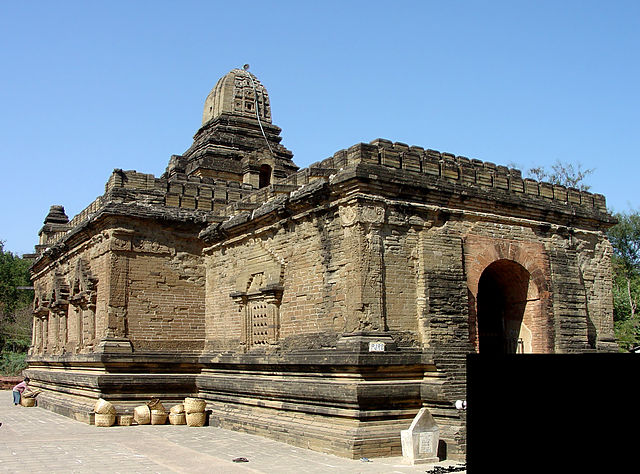
East Entrance
Nan-hpaya, Pagan
mid-11th century
This early temple dates from the reign of Anawrahta ("ann-ARE-uh-tuh," 1044-1077), founder of the imperial dynasty at Pagan. Anawrahta established Theravada Buddhism as the state religion, initiated a program of large-scale temple building, and commenced Pagan's rise to imperial glory through military conquest. Oddly, the temple displays only Hindu motifs in its carving; a statue of Buddha, now lost, may have occupied the central shrine.
Architecturally, it is a gu temple, that is, a temple with a shrine. In this temple the shrine is preceeded by an entrance hall and topped with a sikhara, a plan which is similar to earlier Indian prototypes. A barrel-vaulted entrance hall leads into the shrine proper, which is surmounted by a small tower. The temple is constructed of brick, faced with soft sandstone. On later temples, stucco facing would be used instead of stone.
Alternate spelling: Nanpaya.

